Hirdetés
Introduction
Asus has started a very serious campaign. This has been already visible at CeBIT, where their “stand” was no smaller or less spectacular than other companies’ and even in spite of currently the Eee PC (what a dumb name!) being the center of all hype, they had the time and energy to make a couple of PDAs too. Compared to this, the PND segment humbly stays in the background, although the boys are working heavily over here too. In case of R600, we could have said that it’s a pity that the case is large. It’s possible that the engineers knew about this, as they have proved it this time that they can do it in smaller.
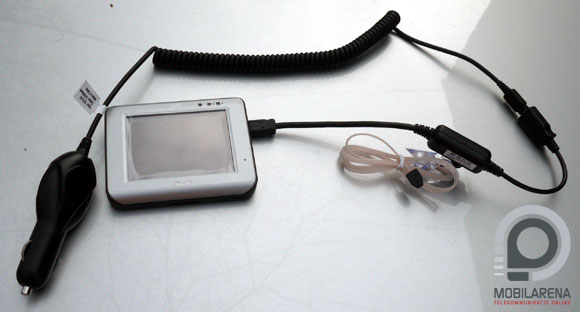
Besides the device itself, that we received thanks to Speedshop, there was GNS TMC receiver too, so I had the opportunity of trying TMC too, that is currently only in its test phase in our country. Unfortunately I haven’t been travelling abroad during the test period, where I could have tested a fully functional TMC network, so this way the review will be a bit unmatched, but this is not due to the TMC receiver.
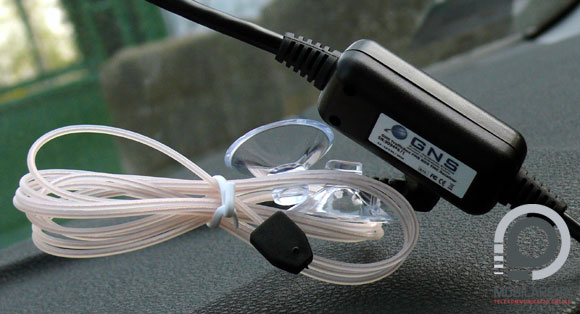
The site of Asus is no good friend of mine. On one hand it is darn slow, and on the other hand, the local site didn’t want to know about the existence of PNDs. Strange. Of course I found everything on the global site; they have emphasized the compact size the most in case of R300 and of course the fact that it is a complete multimedia gadget that fits into my pocket. Let’s see what they managed to realize from these “campaign promises”.
Exterior
As a matter of fact, R300 arrived in a huge box. I say “as a matter of fact”, because Apple, for example, could have packed all this stuff in a box quarter the size. Who knows why is it good that all Asus PNDs get in the same large box. I just cannot understand the logics, a lot of packaging and transport costs could have been cut back. When opening the box, the device is on top, then a lot of folded cardboard comes and finally there is a passive holder, a car charger, manuals, a CD and the umpteenth USB cable of our household. The box of GNS contains the receiver, a manual and an antenna. The receiver is a ~20 cm long piece of cable, with a small box in the center; this is where we can plug the antenna. One end of the cable goes to the navi, the other is connected to the car charger. Nice.
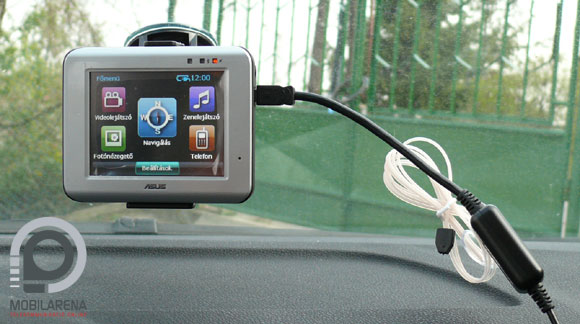
We have here a real razor-navi, it is only 13.8 mm thick, so it easily slips even into a tight jeans pocket during a sightseeing walk. Even being so slim, the device, weighing 140 grams, has a real 3.5” wide TFT display, and it even has the light sensor R600 near the charge and Bluetooth LEDs.
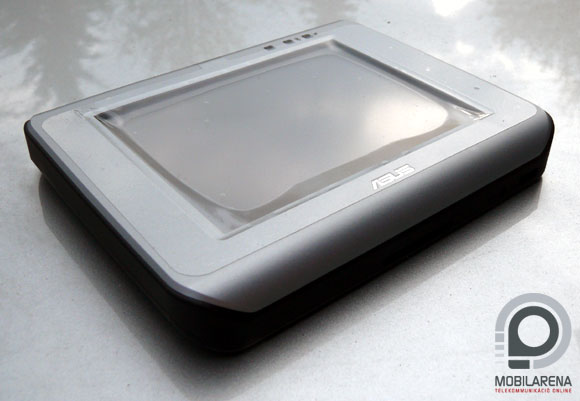
The power button is on top, and it’s sunk enough into the case so it’s only pressed when we want it to. The SD slot and the rubber-protected GPS connector are near it; we can attach the passive holder beneath these two. There is nothing on the left, while we can find a miniUSB port and a 3.5 mm headset connector on the right. There is another gap for the holder on the bottom, on the right of which we can find the reset gap and the main power switch. In the top part of the back there is a large speaker, under this we can see the lid of the battery. The device is aluminum-colored on the front and dark grey on the back. It’s made of a bit hard materials, but fortunately quality can be felt, it’s good to take it into our hands. The passive holder is the rigid type, so it keeps the navi at its place, it doesn’t move at all when driving.
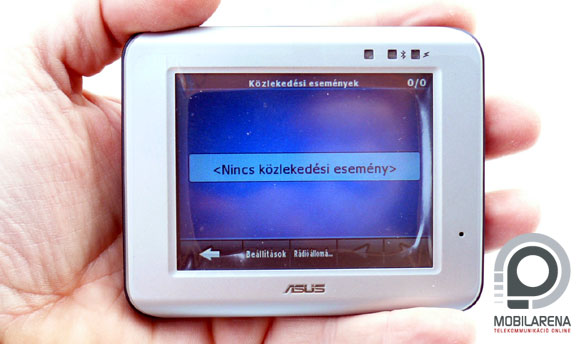
Interior
It’s no surprise that there is a 400 MHz Samsung CPU inside the R300, which is supported by 64 MB of SDRAM. There is 128 MB of FlashROM inside, so we don’t have to run the navigation software from a card and we can fortunately use an SD card of up to 4 GB in size and it even supports SDHC. The system functioned properly, I had no problems with speed at any application.

The built-in SirfStar III GPS receiver finds satellite connection pretty fast, which can be further enhanced by the GPS Catcher software (included on the CD), that stores the current location of satellites. The little Asus has an iGO8 clone running on it, but this is quite ”downgraded”, compared to the original, as it has no buildings in 3D view, only a few landmarks of major importance are included. I really don’t understand this, as the system would support the whole iGO, as the full 3D software fits on a 2GB card. It’s possible that this is the result of business considerations. The display has beautiful picture, the light sensor is very handy, as visibility is acceptable even in bright sunlight.



Sound volume is more than enough during navigation, but who needs more, can “broadcast” all sounds to the car’s radio using the method described in the Garmin nüvi 760 review, thus making the experience complete.
Other, conclusion
R300 also has the picture viewer, MP3 player and video player applications. MP3 playback quality is a strong medium, which of course depends on the headphone used, but the plain player doesn’t add much to the success. There is a built-in handsfree feature, which can use the PND’s speaker or the one in our car: this worked perfectly during the test.


The battery this time is not built-in, but it can be changed, its capacity is 1300 mAh, and it keeps the device online for quite a long time. It’s an interesting fact, that this battery is used in many Asus devices, for example P525 has the same type of power source.

I have grown attached to the little Asus during the few days of the test. Unfortunately the manufacturer missed out a few features in order to let the bigger brother be sellable on the market. Even in spite of this, R300 costs less than €220 with a full Eastern-Europe map, which is a good price, compared to the competitors, so I think the razor-navi from Asus deserves a “Recommended” award.
 |
| Asus R300 |
Gubro
Translated by Szaszati
The sample device has been provided by www.speedshop.hu. Thanks. Please click here for shopping.








